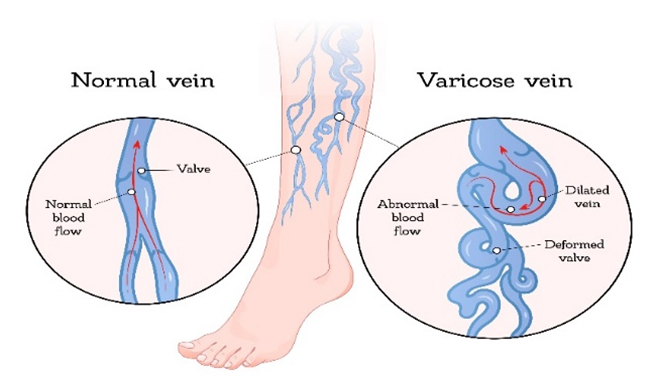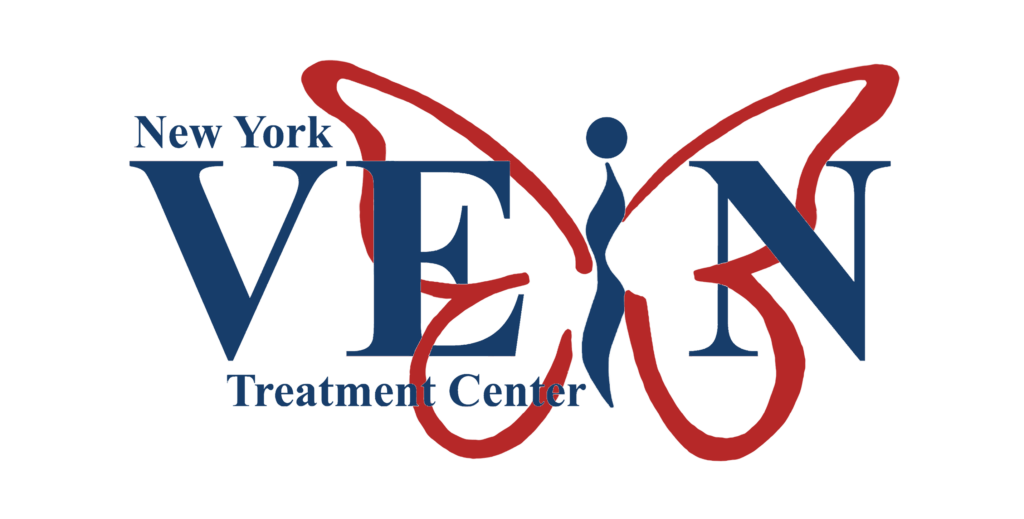Varicose Veins Treatment Clinic
The New York Vein Treatment Center is the premier varicose veins treatment clinic in New York. We offer exceptional care and comprehensive treatment for venous disease. If you are looking for varicose veins treatment, contact us today at (212) 575-8346 to schedule an appointment.

What is the Main Cause of Varicose Veins?
Despite the common belief, varicose veins, or varicosities, are not a disease but rather one of the symptoms of a condition called chronic venous insufficiency (CVI). Coincidentally, while people suffering from CVI always have varicose veins, rarely are they seen by the naked eye. In other words, it resembles many other diseases, such as hypertension, diabetes, or elevated cholesterol, that usually have no visible symptoms.
Another important consideration is the fact that not any bulging vein is the varicose one. CVI elevates venous blood pressure, leading to the formation of varicosities. As the pressure of the blood goes up, the veins are stretched not only across, becoming wider, but also along, becoming longer. It means that any visible bulging vein, which is straight, is normal and often a sign of being in good shape. While bulging, or even flat, veins with twists, kinks, and curves are the pathological ones.
Our circulation is more comparable to a tree rather than a network of blood vessels. While CVI is the root of the venous tree, the varicose veins represent its major branches. Spider veins, or telangiectasia, being another symptom of CVI, are comparable to branches of varicosities.
How Can I Get Rid of My Varicose Veins?
If varicose veins are of concern, underlying chronic venous insufficiency (CVI) should be searched for and treated. This will not only eradicate varicosities and other symptoms of CVI but also prevent its further progression, leading eventually to complications, such as blood clots, bleeding, infection, and trophic ulcers.
Just like with any other disease, it is almost always wrong to treat a symptom. It is essential to establish a diagnosis first and then treat the disease. For example, if a headache is caused by elevated blood pressure, any painkiller might take care of it without, however, affecting underlying hypertension. Untreated hypertension, in turn, can lead to serious complications, including heart failure or stroke. Treating the primary diagnosis, hypertension, will not only eliminate the headache but also prevent its complications. Our varicose veins treatment clinic can help diagnose and treat the symptoms of chronic venous insufficiency and other venous diseases.

Chronic Venous Insufficiency
Chronic Venous Insufficiency is extremely common, yet not well known or understood, including by healthcare professionals. It is also known under the names “superficial venous insufficiency,” “chronic venous hypertension,” and “stasis distal venopathy.”
Most people are familiar with one aspect of venous insufficiency: varicose veins, otherwise known as varicosities. What is not usually known is that varicose veins are merely one of the symptoms of venous insufficiency. Everyone with venous insufficiency does have varicosities. Rarely, however, are the varicose veins visible to the naked eye.
The main problem with venous insufficiency is the blood following. While arteries carry oxygenated blood away from the heart, veins bring deoxygenated blood back to the heart. In humans, the legs are at a disadvantage due to our posture. The blood flows there due to contractions of the heart and also with the help of gravity. To get the blood back up to the heart, our veins have multiple one-way valves. These valves allow the blood to go up while blocking its way down.
With venous insufficiency, some leg veins become too wide, creating a gap between valves. Through this gap, the deoxygenated blood can leak backward instead of moving toward the heart. Since this reversal of blood flow leads to an elevation of venous blood pressure, varicose veins start to form, and the legs become achy, swollen, or feel heavy. The venous blood has no oxygen but plenty of lactic acids and other end-metabolites, and is responsible for leg pain, calf cramps, restless leg syndrome, leg tiredness, muscle fatigue, difficulties walking and standing, the sensations of itching, the sensation of “pins and needles,” numbness, and many other symptoms.
Left untreated, venous insufficiency eventually leads to complications, such as venous leg ulcers, bleeding, blood clots, infection, and skin cancer.
Varicose Vein Treatment Clinic in Manhattan, Brooklyn, and NYC
Dr. Khitin is a known expert in venous disorders, phlebology, and cardiovascular and thoracic medicine. Call us today to schedule your consultation. NY Vein Treatment Center has varicose vein treatment clinics in Manhattan, Brooklyn, and the surrounding New York area to help manage any symptoms and complications of venous disorders.
Start Your Journey To Feeling Good Again!
Schedule your Appointment Today with NYC's most Trusted and Comprehensive Vein Treatment Center

